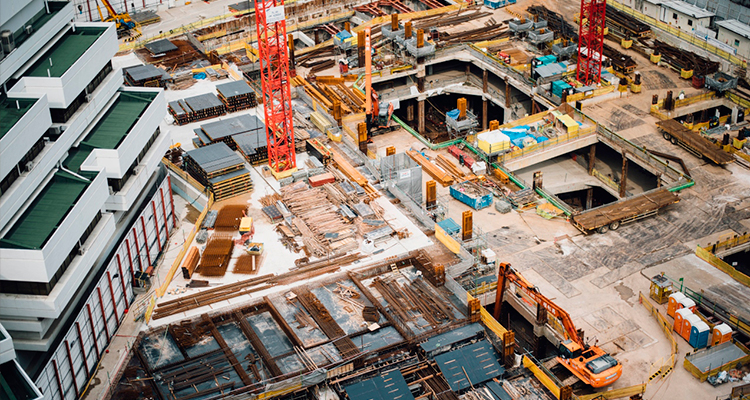Tips on How to Successfully Deliver Construction Projects on Time and on Budget

Construction projects are notorious for their complexity, as they often include a seemingly endless number of tasks and stakeholders. What brings various project parties together is the ultimate goal of delivering results both on time and budget. Still, the more parties involved, the tougher it gets for all the teams to stay on the same page, especially since teams with different specialization and assigned tasks often have different time frames and responsibilities. Here are several techniques and practices that experienced construction project managers use to save time and minimize delays while staying within the budget.
Set a precise timeline
A detailed contract which elaborates the project expectations in detail including the time frame is the first cornerstone of time management. Contracts in construction business contain gargantuan amounts of information and can be used as the initial home base on which the entire project will be developed. With this in mind, make sure that everybody is fully aware of their duties and task as specified by the contract. As a result, every team will have plenty of time to organize their work to meet their tasks on time.

Establish a flow of information
A common obstacle for contractors to overcome is related to the connection of the building site with the back office. By setting up an undisrupted flow of information, updates, and reports between the office and the ground team you're minimizing the margin for error. Still, maintaining lossless communication is a demanding process that calls for perfect synchronization and unquestioned collaboration between different parties. This includes the process of sharing knowledge and updates, where all project participants can offer their input. With the increased development of digital platforms, this goal is much easier to achieve today than a decade ago.

Use advanced building methods
Using thin concrete walls made on-site, which are divided into sections called panels, the tilt-up method has proven to have lower costs than traditional building methods. These panels can be mixed directly over the floor slab or on a work platform and then lifted by a crane and placed over the foundations. Due to their fast construction, they provide great savings through reduced labour costs. When compared to the development of similar buildings made out of cinder blocks or sheeting, on-site tilt-up construction generally takes 30% less time. From the architectural point of view, buildings made with this technique are more aesthetic than those made out of masonry and sheeting. From an environmental standpoint, this method can be considered sustainable since no transportation means no carbon emissions.

Choose the right digital tool
Choosing the right digital tool or tools can make a big difference in delivering your construction project on time and budget. All along the chain of responsibilities, the ability to share your updates with the rest of the members of the team in real-time and without any hassle is essential for meeting your goals. Some digital tools, though, offer much more than that. While some believe that BIM (Building Information Modelling) is just a 3D modelling tool, it's capable of including 4D (time), 5D (cost) and even 6D (as-built operation). It represents a comprehensive platform for the management of information on a project. BIMs are digital files that provide details about every aspect of a project, with the main purpose of supporting the decision-making process.

Rely on data
The availability of data represents the true power of construction project digital tools. Many scions of the construction industry already regard data as the most valuable resource for the future of the industry, and a basis of productivity growth, global competition, and innovation. However, the problem is that at the moment, construction is the least digitalized sector after agriculture, with a staggering productivity gap of $1.6 trillion a year, compared to the average economy. If construction project managers learn to collect, analyse, and control data properly, they could refine the building process to the remarkable precision, rooting out any delays and project overruns before they sprout.
Recognize signs of delay
In construction, a delay is an event that causes a period where scheduled activities are incomplete. In the case of a delay, the project falls behind schedule and risks being rushed, where project managers urge contractors to finish the work on time. The time extensions often result in fines, terminations, and court cases that drain resources for all involved. By learning to recognize the signs of delay, participants can prepare techniques to prevent them. Using field notes and other reports, the construction manager or owner should reassemble the pieces to understand what caused the delay and formulate a solid plan to put the project back on track.
In construction projects, the initiation of one task is often unavoidably connected to the completion of another task. With such a chain of tasks and responsibilities, a disruption of one task can easily lead to costly delays and overruns. By establishing a smooth flow of information, using adequate digital tools, and advanced construction methods, construction managers are ensuring that their project is completed within the agreed timeframe.












